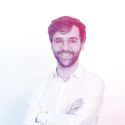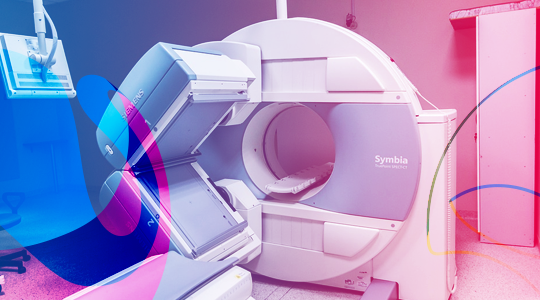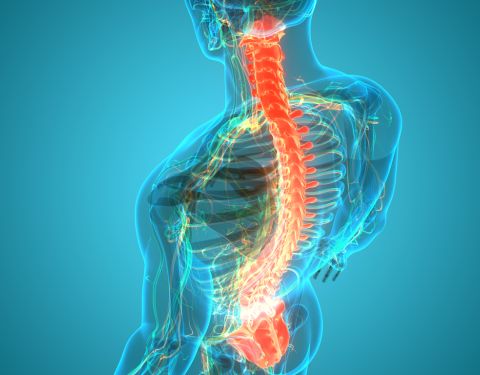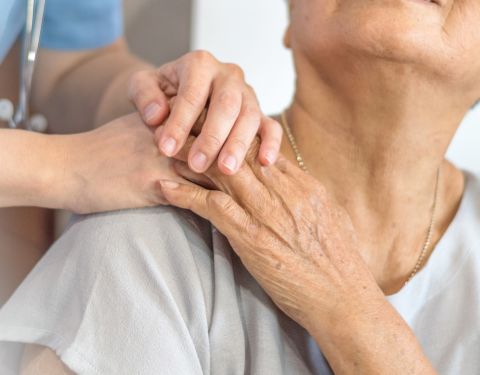This letter of information was designed under the auspices of the French Confederation for Plastic, Reconstructive and Aesthetic Surgery (FCPRAS), as a complement to your first consultation with a purpose to answer all the questions that may arise in the case, if you need to go in for lipoaspiration. The purpose of this document is to provide you with all the information necessary to enable you to take the weighted decision, with a full understanding of the situation. Therefore we advise you to read this information maximally carefully.

DEFINITION, GOALS, AND PRINCIPLES – aspiration of subcutaneous fat
Recent achievements, especially in the area of interfacial liposuction, reached in particular through the use of very thin cannulas, allow the skin, which is above located respectively to the post-operative zone not to suffer from the liposuction: on the contrary, the appearance of the skin can be improved due to its tension that is provided by a properly conducted lipoaspiration surgery. As a rule, the localized fat accumulations do not disappear despite diet and physical activity. In fact, lipoaspiration is not a method of weight loss and its goal is not the weight control of the patient: a correctly performed lipoaspiration will not allow you to save on the improvement of vital hygiene. Lipoaspiration is also not a treatment of obesity or bariatrics.
The principle of lipoaspiration (it was designed since 1977 by Yves-Gerard ILLOUZ) applies very small discissions, foamy cannulas with rounded and not sharp ends that have many holes on the edges. These cannulas are connected with a closed circuit, which creates a negative pressure. Thus, it will be possible to achieve a harmonious and non-traumatic aspiration (suction) of excess fat cells. Since these fat cells do not have the ability to multiply, the return of such “overcrowding” of adipocytes is excluded.
In practice the liposuction may be applied to many parts of the body: of course, this is the “breeches” zone, hips, abdomen, buttocks, knees, calves, ankles, hands, back. Technical improvements of this method allowed to expand of its application also to the area of the face and neck (double chin or buccula, facial contours). The liposuction allows radically and definitely eliminates the localized fat pad. But it should be kept in mind that liposuction, despite its wide-spreading in recent years, should always be considered as a true surgical operation that can be legally held in France exclusively by the competent and qualified plastic surgeon, specially trained for this type of surgery carried out in a real surgical context. The treatment of localized fat accumulations does not provide for the coverage of medical insurance.
BEFORE THE SURGERY
The general preoperative examination is usually performed in accordance with the doctor’s regulations. The anesthesiologist is to advise you not later than 48 hours prior to the surgery. Smoking is not a formal contraindication, but it is recommended to stop smoking a month before the surgery, in view of its adverse impact on the cicatrization process. It may be necessary to cease the possible medication intake of oral contraceptives, in particular, in case of the availability of some risk factors (obesity, poor condition of veins, coagulation failure). It is not allowed to take medicines containing aspirin within 10 days before the surgery.
Depending on the type of anesthesia, you may be asked to remain on an empty stomach (do not eat and do not drink for 6 hours before the surgery).

ANESTHESIA TYPE AND CONDITIONS OF HOSPITALIZATION
The type of anesthesia: depending on the case and the operation sites, the lipoaspiration is usually conducted under the penetrating local anesthesia with the intravenous injection of tranquilizers (“awake” anesthesia). The local (epidural or rachianesthesia) or even general anesthesia can also be applied. The choice between these types of anesthesia will be made as a result of consultation between you, the surgeon, and the anesthesiologist. Conditions of hospitalization: the duration of the hospitalization depends on the amount of eliminated fat. It may be a short term, about several hours for a small lipoaspiration (the local anesthesia is applied then), as well as it may last for 1-2 days for a more significant lipoaspiration (general anesthesia is applied).

SURGERY
Each surgeon uses its own unique method, which is applicable in each individual case in order to obtain the best results. The incisions are usually short (about 3-4 mm) and obsolete; they are hidden in the natural fold. In some cases, the surgeon can offer you the “assisted” lipoaspiration (the powered cannula, the cannula of vibrating type, connected to the radio frequency, etc.) aimed at improving the result of a very weakened or damaged by the cellulite skin. Their real effectiveness continues to be controversial, but in some cases, they can bring to the evident “plus”.
The volume of eliminated fat must correspond to the quality of the above-located skin that makes up one of the factors determining the quality of the result. At the end of the surgery to limit the edema in the postoperative period the modeling compression pad will be applied with the use of specialized stockings or the elastic bandage. The duration of the surgery depends on the amount of extracted fat and the number of sites subject to the surgery. It can vary from 20 minutes up to 3 hours (at average about 1-2 hours).
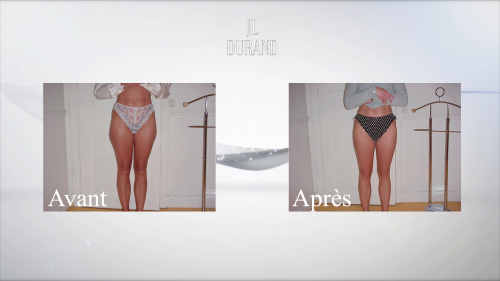
POSTOPERATIVE PERIOD
It should be noted that the time for restoration and recovery is proportional to the amount of eliminated or extracted fat. During the postoperative period, ecchymoses (bruises) and edema (swellings) can appear in the post-operative sites. The pain of different types may happen, but as a rule, it is quite bearable due to very thin cannulas. The fatigue may be felt, especially in case of the eliminating of a significant amount of fat, within the first days.
The normal activity can be restored in 2-10 days after the surgery, depending on the volume of the lipoaspiration and the type of professional activities. The bruises disappear in 10-20 days after the surgery. It is recommended to wear the compression and supporting garments within 2-4 weeks after the surgery. The sports activities can be resumed in 3 weeks after the surgery. For a period of at least 3 months, it is not recommended to expose to sun or ultraviolet at the post-operative sites, because this may cause the risk of skin pigmentation.
After the resorption of swellings and bruises, the result will start to appear only in 2-3 weeks after the surgery. In some cases, it is possible to use the extracted fat to give the best contours to some parts of the body that are considered insufficiently shaped (face, buttocks, hands, breast (it remains a controversial issue, except for the cases of breast reconstruction after cancer)). If you are interested in this alternative, you should discuss it with the surgeon in advance, since not all the factors are possible (see “Re-Injections of Autogenous Fat or Lipostructure”). The result will start to appear only through the 3 weeks after the resorption of a swelling. The skin will need 3-6 months for a final tension and the possibility to adapt to the new silhouette.

RESULT
A result can be estimated only 6 months after the surgery. It is mostly satisfactory if the criteria and the choice of the method were correct: the lipoaspiration will allow to finally eliminate the localized fat accumulations, ensuring a visible tension of the skin. The purpose of this surgery is to achieve improvement, not perfection. If your wishes are realistic, the result will satisfy you to the full.
DISADVANTAGES OF THE RESULT
We have noticed that a properly designed and conducted surgery of lipoaspiration very often renders a real service to the patients in obtaining a satisfactory result, appropriate to their expectations. The disadvantages of local nature may occur in some cases (they do not constitute real complications): imperfect correction, residual unbalance, surface irregularity. They can be resolved by means of additional treatment: a slight lipoaspiration “try-in” under the local anesthesia in 6 months after the surgery.
POSSIBLE COMPLICATIONS
The lipoaspiration, even if it is carried out with aesthetic motives, is nevertheless a true surgical operation that bears the risks inherent in any other medical interferences however minimal they may be. The complications related to anesthesia should be distinguished from those related to surgical interference. With regard to the anesthesia, the anesthesiologist during the consultations will inform the patient about possible anesthesia risks. One should know that the anesthesia can cause some unpredictable reactions in the organism that can be more or less easily cured: the fact of addressing the competent anesthesiologist, practicing in a surgical context, means that the risks remain relatively minor from the statistic point of view. A point to keep in mind is that the methods and medical products, applied for the anesthesia, as well as the methods of monitoring, have improved significantly for the last thirty years, providing the optimum security, especially when the surgery is carried out outside the framework of the emergency and with a healthy person.
As for the surgical actions, when choosing the competent and qualified plastic surgeon, trained for such type of surgical operations, you limit such risks to the maximum extent, but do not resolve them completely. The truly serious complications are unusual as a result of the correctly carried out lipoaspiration: the correct selection of criteria and proficient performance of the surgery should, as a rule, guarantee effective and real preventive care.
Nevertheless, in spite of their small frequency, you must be informed of the possible complications:
- The thromboembolic complications (phlebitis, pulmonary embolism), although in general, they occur very rarely after such type of surgery, nevertheless they remain one of the most dangerous. The strict preventive measures can minimize their presence: wearing of anti-thrombotic tights or stockings, getting up early, possible treatment by the anticoagulation.
- The hemorrhages are rarely serious, except for the cases of coagulation failure.
- The hematomas and lymphoid exudate appear very rarely after properly performed surgery.
- Even local necrosis of the skin, which increases the period of scarring, should not occur.
- The infection is extremely rare in this type of operation, which is called “closed”. The infection can be prevented through the prescribing of prophylactic antibiotic therapy.
- Finally, the cases of metabolic disorder or anemia were sometimes observed after numerous and excessive lipoaspiration sessions.
In general, the risks should not be overestimated, it must be kept in mind that the surgical interference, even if it seems to be a simple operation, always contains some part of the risk, even though this part is the smallest one. Applying to a qualified plastic surgeon will help to ensure that he has the necessary education and professional skills to avoid such complications or, if necessary, to cure them effectively.
PERSONAL NOTES
This is the basic information, which we would like to offer you as a supplement to the consultation. We recommend you to keep this document in order to read it again after the consultation and think about it “with a clear head”. Possibly after considering this issue you would have some questions which we will be able to answer. We remain at your disposal for the further discussion of this matter at the time of the next consultation or on the phone even on the day of operation, when we meet again, in any case, before the anesthesia.







